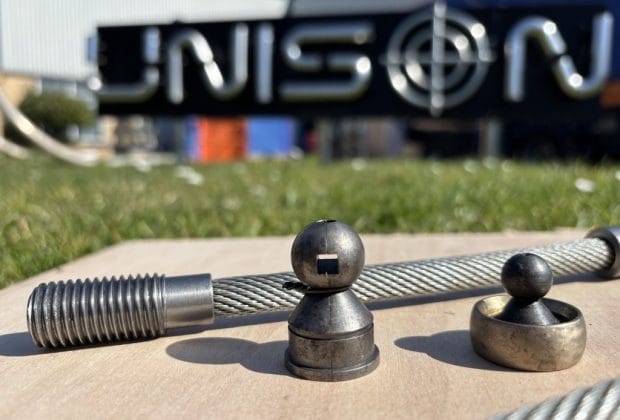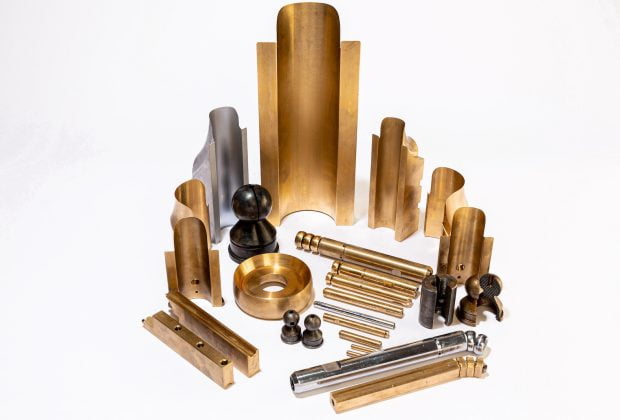Blog by Luke Gibson
If you’ve spent any time around tube bending, you’ll know how important mandrels are to achieving clean, accurate bends on your tube bending machine.
Most of the time, the internal setup comes down to two options: mandrel links or cables.
Both serve the same purpose, but they behave differently – and depending on what you’re bending, how tight the radii are, and how often you’re changing tooling, one might suit you better than the other.
Here’s a straightforward comparison, based on what we see on the shop floor.

Mandrel links are solid little segments that connect the mandrel balls.
They look like chess pawns, and their job is to hold the ball assembly in line inside the tube and articulate while you bend it.
These are great when you need tight, accurate bends and repeatability.
They’re sturdy, they last, and they give you confidence that the bend’s going to come out right – especially if you’re working on parts for aerospace or anything high-precision.
Pros:
Things to keep in mind:
Cables are the more flexible option—literally. They’re great when you’re working with more complex shapes, or if you just want something quick and easy to change over.
They’re not quite as robust as mandrel links, but they do the job well in high-volume environments, like automotive production, where speed is key and you’re not pushing the limits on precision as much.
Pros:
Things to consider:
Honestly? Both will work for most applications.
It often just comes down to what you’re making, how often you’re changing setups, and what your team prefers using.
A lot of shops actually use both, depending on the job.
At Unison Ltd, we keep both mandrel links and cables in stock, ready for despatch.
If you’re not sure what you need, give us a call or drop us a message – our team will point you in the right direction.
Whether you’re doing short runs or big batches, precision work or production jobs – we’ll help you get the tooling sorted so you can get bending.
Check out the full range here:
https://www.unisonltd.com/tooling/
